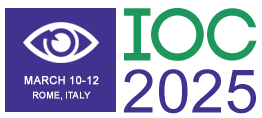Title : No drops after cataract surgery: A patient centred approach – Feasibility study
Abstract:
Background: Although cataract surgery is one of the most cost-effective treatments offered on the NHS, it can still be improved. Within NHS Tayside, current practice is that patients are discharged with prednisolone acetate 1% eye-drops to instil four times a day for four weeks after routine cataract surgery. Some patients struggle with instillation, timing, and compliance with the large quantity of eye drops required post-cataract surgery. A recent retrospective cohort study published concluded that a once off subconjunctival triamcinolone injection is not only a cheaper treatment option, but it can also be as effective as steroid eye drops for the prophylaxis of complications associated with cataract surgery, such as delayed improvement of visual acuity and macular oedema (Shorstein, et al. 2024). The gold standard study would be a randomised control trial (RCT), but this type of study can be a very lengthy and costly process. Prior to carrying out an RCT, this feasibility study was performed to ensure that a subconjunctival triamcinolone injection is an effective treatment option, and that it is also a treatment option that patients would want.
Aims: To assess which treatment option patients would prefer after their cataract operation, the steroid eye drops or steroid injection. Patients who received the triamcinolone injection were followed up to monitor their visual acuity and complication rate over a six week period.
Methods: Initially, a questionnaire was trialled to assess how patients felt about the current cataract procedure and the potential of a once-off injection during the cataract operation. Every patient who attended Ninewells Hospital for phacoemulsification cataract surgery over a four week period received the questionnaire, which accounted for 109 patients. One surgeon saw the positive responses during this questionnaire trial and adopted to begin offering this treatment option throughout the month of May, 2024. Every patient on this surgeon's list was offered the injection, accounting for a total of 79 patients. One patient was excluded from receiving the injection due to poorly controlled glaucoma, and one patient was excluded due to intraoperative complications. Two patients who opted for the injection received drops post-operatively due to the increased demand for the injection during this study which resulted in NHS Tayside running out of triamcinolone.
Results: Reviewing the questionnaire responses, 95 patients reported they felt either ‘Positive’ or ‘Very positive’ to receiving the injection instead of the drops, with 53 of these responses being ‘Very Positive’. Only two patients felt ‘Negative’ towards receiving the injection, with zero patients feeling ‘Very negative’. Of the 79 patients offered the injection, only one patient opted for the steroid eye drops, which after the 4 excluded as mentioned previously, resulted in 75 patients, or 119 eyes, receiving the injection. Six patients went on to require a course of eye drops, three for corneal defects, one for cystoid macular oedema and two for post-operative uveitis.
Conclusion: Patients were very enthusiastic about the no-drops post-cataract approach, which could be viewed as the superior treatment option due to the decreased cost, similar postoperative outcomes and patient preference.



